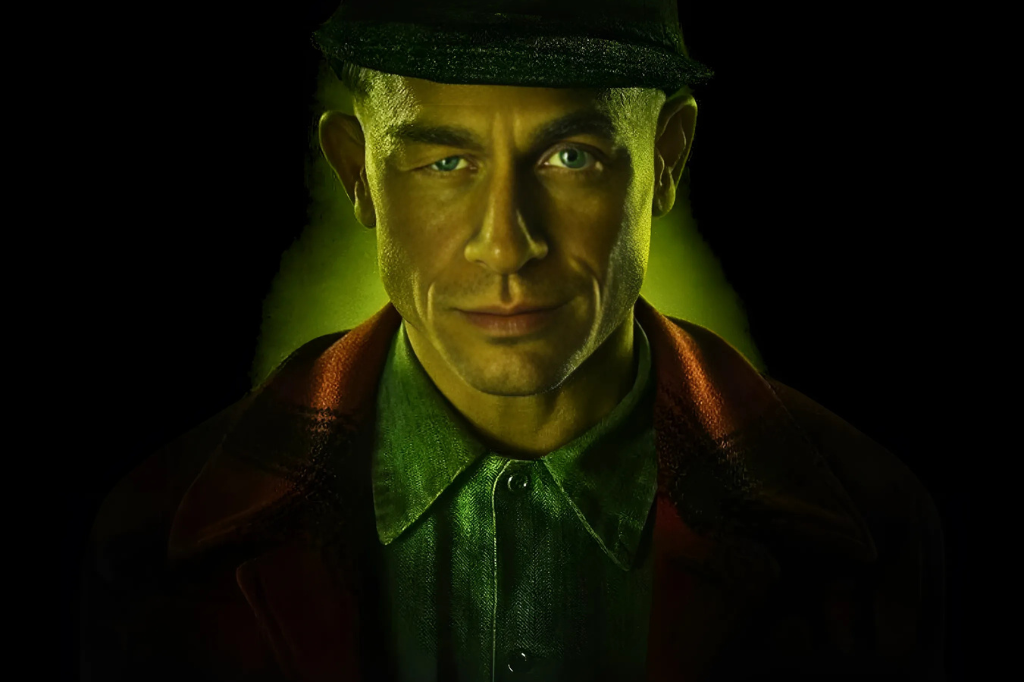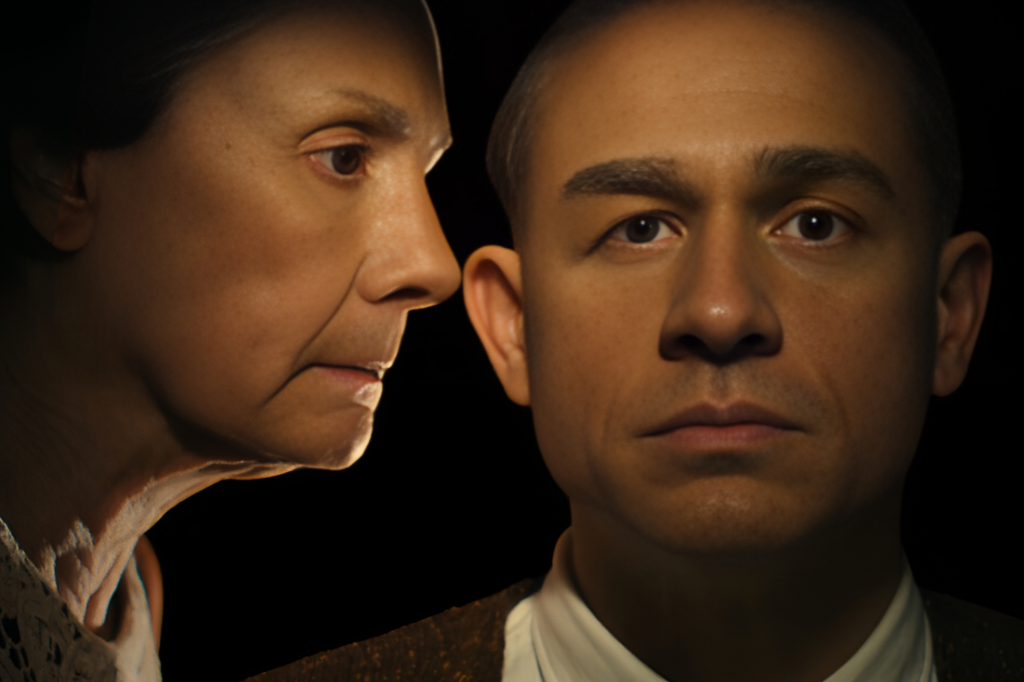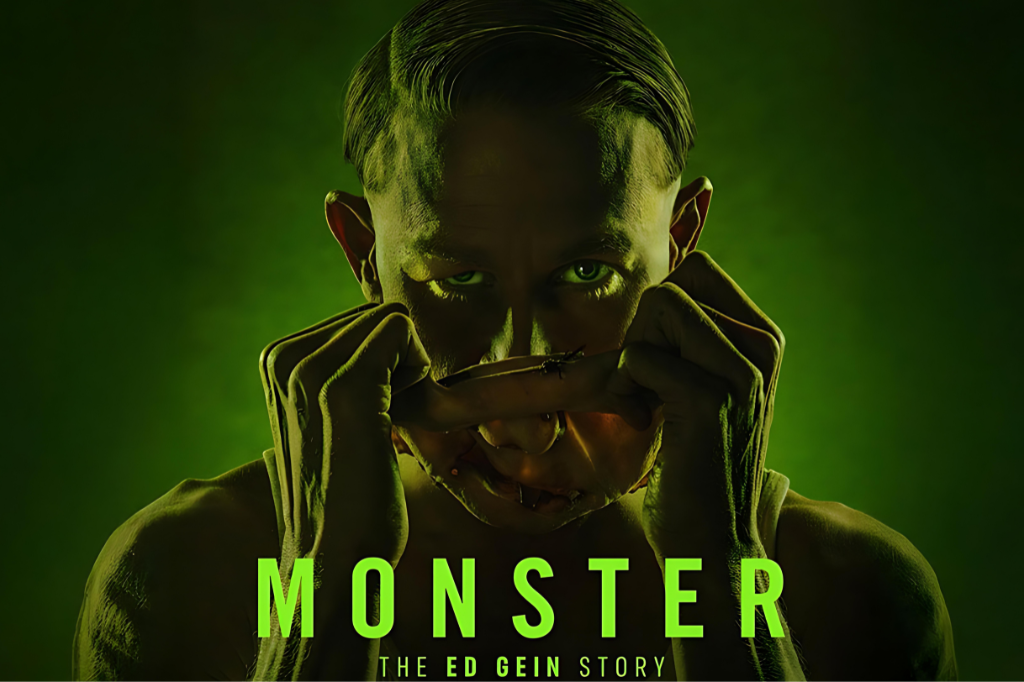Now Reading: Monster – The Ed Gein Story | Everything You Need to Know (2025)
-
01
Monster – The Ed Gein Story | Everything You Need to Know (2025)

Monster – The Ed Gein Story | Everything You Need to Know (2025)
When Netflix dropped its latest installment in the Monster anthology, Monster – The Ed Gein Story, audiences braced themselves for another chilling dive into America’s darkest criminal minds. But unlike the fictional killers inspired by him—Leatherface in Texas Chainsaw Massacre, Norman Bates in Psycho, or Buffalo Bill in Silence of the Lambs—the real-life Ed Gein was far more disturbing. His crimes weren’t just horror movie material; they were the kind of grotesque nightmares that scarred small-town America and reshaped our very idea of human evil.
- Read Also – Wayward Review: Toni Collette’s Chilling Netflix Thriller [Verdict]
- Néro the Assassin: Everything to Know Before Oct. 8 Release [Guide]
- Alice In Borderland Recap: Everything to Know Before S3
- Mantis Netflix Thriller: Everything You Need to Know (Guide)
- Ending Explained
- Season Recap
Table of Contents
Who Was Ed Gein? The Making of the “Plainfield Ghoul”

Edward Theodore Gein was born on August 27, 1906, in La Crosse, Wisconsin. His childhood was defined by a tyrannical and ultra-religious mother, Augusta, who preached that women were sinful and the world was crawling with evil. Ed grew up isolated, bullied, and socially awkward—an easy target for ridicule due to his lazy eye and stutter.
After his brother Henry died under suspicious circumstances in 1944, Ed became increasingly reclusive. When his mother passed away in 1945, he lost his only real connection to the world. This obsession with Augusta, mixed with his loneliness and twisted fantasies, would drive him into the depths of horror that later earned him the name “The Butcher of Plainfield.”
A Chilling Discovery: The Day the Horror Unfolded
On the cold morning of November 16, 1957, 58-year-old Bernice Worden vanished from her hardware store in Plainfield, Wisconsin. Bloodstains on the floor and an abandoned sales slip for antifreeze pointed to Ed Gein, who was arrested later that evening.
What investigators found at his farmhouse remains one of the most disturbing discoveries in American crime history.
Inside Gein’s home were chairs upholstered in human skin, masks made from human faces, boxes of body parts, and even a “woman suit” crafted from female flesh. Bernice Worden’s mutilated body was discovered hanging upside down in a shed, gutted like a deer.
When questioned, Ed admitted to grave robbing, exhuming corpses that reminded him of his mother, and collecting body parts for his macabre creations. He wanted, as he confessed, to “become” his mother by wearing her skin.

Victims and Grave Robbing
Though Bernice Worden’s murder secured his arrest, investigators soon realized Gein’s crimes went far deeper.
- In 1954, tavern owner Mary Hogan disappeared. Her remains were later discovered in Gein’s home.
- Between 1947 and 1952, he admitted to robbing graves in Plainfield cemeteries, targeting women who resembled Augusta.
Authorities believed he exhumed at least 9 to 11 bodies, though the true number may never be known. His farmhouse became a gruesome museum of death, filled with dismembered remains and objects made from human skin and bones.

Trial, Insanity, and Life Behind Bars
In 1958, Ed Gein was charged with the murder of Bernice Worden but was declared legally insane. Instead of prison, he was committed to Central State Hospital for the Criminally Insane.
For years, he lived a quiet life under psychiatric care. Doctors described him as mild-mannered, even polite, a stark contrast to the horrors of his crimes. In 1974, he was found competent to stand trial again and was convicted of Worden’s murder—but once more, his insanity spared him from prison.
Ed Gein remained institutionalized until his death from cancer in 1984 at the age of 77.
From Real Life to Horror Legends
The grotesque legacy of Monster – The Ed Gein Story isn’t just in the crime files—it’s in Hollywood. Gein’s twisted obsession with human skin and his mother inspired some of the most iconic horror villains ever created:
- Norman Bates in Psycho – Inspired by Gein’s unhealthy attachment to his mother.
- Leatherface in Texas Chainsaw Massacre – Modeled after Gein’s skin masks.
- Buffalo Bill in Silence of the Lambs – A direct nod to Gein’s desire to make a “woman suit.”
These characters terrified millions worldwide, but the reality of Gein’s crimes was far worse than fiction.

Netflix’s Take: MONSTER – The Ed Gein Story
In 2025, Netflix released the third season of its true crime anthology series, Monster, with actor Charlie Hunnam portraying Ed Gein. Titled Monster – The Ed Gein Story, the series dives into the disturbing psyche of the Plainfield Ghoul, his crimes, and the cultural impact he left behind.
While the show earned mixed reviews, it reignited conversations about true crime ethics, victim sensitivity, and why society remains fascinated by monsters like Ed Gein. Some praised the chilling performance, while others criticized it for not fully capturing the depth of Gein’s darkness.
Why Ed Gein Still Haunts Us

So why does the story of Ed Gein continue to captivate generations, decades after his death? Perhaps because his crimes blurred the line between the ordinary and the unimaginable. He wasn’t a charming serial killer or a criminal mastermind. He was a meek, awkward, small-town man—someone who could have been anyone’s neighbor.
And that’s what makes Monster – The Ed Gein Story so terrifying. It forces us to confront the fact that real horror doesn’t always wear a mask or carry a chainsaw. Sometimes, it lives quietly among us, hiding its darkness until it’s too late.
Final Thoughts
Netflix’s Monster – The Ed Gein Story is not just another true crime series—it’s a chilling reminder of one of America’s most infamous killers. Ed Gein’s crimes shocked the world, inspired generations of horror films, and left a legacy that continues to disturb us today.
As you watch the series or revisit the films he inspired, remember this: fiction can be terrifying, but the real-life story of Ed Gein is far darker than Hollywood ever dared to show.
MONSTER – The Ed Gein Story will forever remain one of the most disturbing chapters in true crime history.















